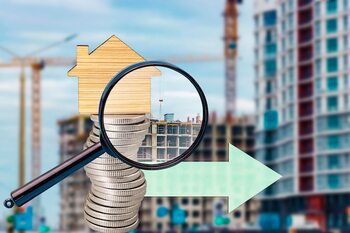Benefits of community well-being in real estate valuation

Community well-being is a fundamental pillar that directly impacts real estate valuation. In a world where quality of life and a sense of belonging are increasingly valued, communities that promote collaboration and mutual support not only enhance the experience of their residents but also increase their appeal to investors. Discover how these benefits can transform your perspective on the location and appreciation of your property.
1. The connection between community and real estate valuation
The connection between community and real estate appreciation is a crucial aspect that cannot be underestimated. Communities that promote social interaction, mutual support, and collaboration often experience an increase in their quality of life. This social cohesion creates an attractive environment for potential buyers and investors, who are looking not only for a property but also for a place where their families can thrive. As more people want to live in areas with a strong community identity, properties in these areas tend to appreciate in value more steadily.
Furthermore, the benefits of community well-being extend beyond the mere appreciation of property values. When residents actively engage in local activities, such as fairs, cultural events, or volunteer programs, a sense of belonging is established that reinforces the security and stability of the neighborhood. This creates a positive cycle: the greater the community participation, the higher the satisfaction among residents, and thus, the greater the interest from potential buyers. In this way, real estate appreciation is driven by this robust social fabric that makes areas desirable and safe to live in.
2. How neighborhood security influences property prices
Neighborhood safety is a determining factor in property valuation, as potential buyers tend to prioritize environments where they feel protected and calm. Communities with watch initiatives, organized neighbor groups, or crime prevention programs tend to attract more interest in the real estate market. This not only translates into higher demand but also allows homeowners to maintain or even increase the value of their real estate over time. The perception of a safe neighborhood can be as influential as the quality of nearby schools or the available commercial offerings.
Additionally, collaboration among neighbors to promote safety creates a sense of community that goes beyond mere physical protection. Residents who feel connected and responsible for one another not only enjoy a safer environment but are also more inclined to care for and improve their neighborhood. This collective commitment can result in community projects that beautify the area, thus enhancing its overall appeal. Consequently, a vibrant and safe community becomes a magnet for buyers and investors, fostering a positive cycle where real estate appreciation benefits from shared well-being.
3. The impact of public spaces on community well-being
Public spaces play a crucial role in promoting community well-being, as they are places where people can interact, socialize, and engage in activities that strengthen social ties. Areas such as parks, plazas, and community centers not only provide a conducive environment for recreation but also serve as meeting points that foster a sense of belonging and cohesion among residents. When communities have well-designed and accessible public spaces, the quality of life for their inhabitants increases, which in turn can translate into greater demand from potential buyers and investors. Furthermore, these spaces contribute to the mental and physical health of their users by providing opportunities for outdoor exercise, participating in cultural events, or simply enjoying nature. The presence of green and recreational areas can reduce stress and improve individuals' emotional states, creating a safer and more pleasant environment. This positive impact on quality of life is directly reflected in real estate appeal; properties located near well-maintained public spaces tend to have higher valuations and are more sought after in the market. Thus, promoting the development and proper maintenance of these spaces not only benefits current residents but also becomes a strategic investment for future homeowners and investors.
4. Community projects: a long-term investment in added value
Community projects are an effective way to improve infrastructure and services in an area, which translates into a significant increase in its value. Initiatives such as the creation of parks, cultural centers, or recreational spaces not only beautify the surroundings but also foster a sense of belonging among residents. When communities actively engage in these projects, they strengthen their social ties and create an environment conducive to personal and collective growth. This social cohesion makes the area more attractive to potential buyers and tenants, who seek places not only to live but also to enjoy a higher quality of life.
Additionally, community projects can attract external investments that benefit the entire community. Companies and entrepreneurs often view favorably those areas where collaboration among neighbors is evident and where there is a commitment from residents to maintain a pleasant environment. This can translate into greater commercial development and local job creation, which further reinforces real estate appreciation. In summary, investing time and resources in community initiatives is a smart strategy not only to enhance current quality of life but also as an effective way to ensure a prosperous future for both residents and their properties.
5. The importance of access to services and its effect on real estate value
Access to essential services such as education, health, transportation, and recreation is a determining factor in real estate valuation. Communities that provide adequate infrastructure and easy access to these services tend to be more attractive to potential buyers and tenants. For example, proximity to good schools or healthcare centers not only improves the quality of life for residents but also increases the interest of those looking to invest in properties. This translates into an increase in real estate market prices, as people are willing to pay more to live in areas where they can easily meet their daily needs.
Additionally, access to services also fosters a sense of community and social cohesion, which can positively influence the perception of the neighborhood. When residents feel that they have everything they need within reach—from well-maintained parks to local cafes and shops—they are more likely to develop a sense of belonging to their environment. This not only contributes to the overall well-being of the community but also reinforces property values by making the area seen as a desirable place to live. Consequently, both investments in infrastructure and community development are vital to ensuring sustainable and growing appreciation of properties in the area.
6. Case studies: successful communities and their valuation
The study of case studies of successful communities reveals how collective well-being can be a driver for real estate appreciation. For example, in neighborhoods where cooperation initiatives have been implemented, such as community gardens or cultural activities, a significant increase in resident satisfaction has been observed. These actions not only strengthen social ties but also attract new residents and potential buyers interested in living in environments that promote healthy and collaborative lifestyles. The creation of shared spaces and community events not only enhances the quality of life but also elevates the perceived value of the area.
Another notable case is that of communities that have bet on sustainability and respect for the environment. Projects that integrate green technologies, such as recycling systems and renewable energies, not only make these areas more attractive from an ethical perspective but also generate an increase in real estate prices. Investors are increasingly interested in properties located in neighborhoods that prioritize social and ecological well-being, highlighting how a commitment to a positive environment can directly translate into higher real estate valuation. These examples clearly demonstrate that investing in community well-being is a smart strategy for both residents and those looking to maximize the value of their investments.
7. Strategies to promote community well-being
Promoting community well-being is a powerful strategy to increase real estate valuation. Communities can implement activities that foster social cohesion, such as workshops, fairs, and cultural events, where residents can not only interact but also share skills and resources. These initiatives generate a sense of belonging and pride among community members, which in turn attracts new residents and investors interested in vibrant and dynamic spaces. Furthermore, by strengthening interpersonal relationships, a safer and more welcoming environment is created, which is essential for the growth of property values in the area.
Another effective strategy is the development of public spaces that facilitate social interaction. Well-designed parks, squares, and recreational areas are essential for fostering spontaneous encounters among neighbors. The creation of these spaces not only improves the quality of life for residents but also increases the area's appeal to potential buyers and tenants. Investing in community infrastructure demonstrates a commitment to collective well-being, thereby elevating the neighborhood's profile in the real estate market. By promoting an environment where everyone feels included and valued, the foundations for sustained long-term appreciation are laid.
8. The role of sustainability in real estate valuation
Sustainability has become a crucial factor in real estate valuation, especially in communities that prioritize the well-being of their residents. The implementation of sustainable practices, such as the use of eco-friendly materials, energy efficiency, and the creation of green spaces, not only contributes to a healthier environment but also attracts a growing segment of buyers and investors who value these principles. As people become more aware of environmental impact, properties that incorporate sustainable elements tend to maintain or even increase their value over time.
Additionally, communities that promote sustainability tend to generate greater social cohesion by involving residents in ecological initiatives and community projects. This active participation fosters a sense of belonging and shared responsibility towards the environment, which in turn enhances the overall quality of life. Investing in a property within a sustainable community not only means securing an aesthetically and functionally appealing home but also contributing to the development of a place where community and environmental values are an integral part of everyday life. Thus, the relationship between sustainability and real estate valuation becomes a powerful synergy that benefits both individuals and the collective.
9. Community events as a driver of local development
Community events play a crucial role in driving local development, as they foster social cohesion and strengthen relationships among residents. Through fairs, festivals, workshops, and recreational activities, a conducive space is created for residents to get to know each other and collaborate on common projects. This interaction not only enhances the sense of belonging but also promotes the exchange of ideas and skills, which can translate into initiatives that benefit the entire community. By establishing a strong support network among neighbors, the foundations for a safer and more welcoming environment are laid.
Additionally, the organization of community events has a direct impact on real estate valuation by attracting both residents and potential buyers and investors. Areas where regular activities are held tend to be perceived as more vibrant and dynamic, which is appealing to those seeking not just a home, but also an active and connected lifestyle. The visibility of these events can increase interest in local properties, raising their demand and potentially their price in the market. In this sense, investing in the organization of events can be seen as an effective strategy to enhance not only community well-being but also the economic prosperity of the area.
10. Future Perspectives: Trends in Community Living and Real Estate Market
Trends in community living are evolving towards a more inclusive and sustainable approach, where collaboration among neighbors becomes a driving force for development. Increasingly, people are seeking residences that not only offer comfort and style but also cultivate social interaction and mutual support. This translates into the emergence of common spaces, such as parks, community gardens, and recreational areas, that encourage gatherings among residents. This type of infrastructure not only improves the quality of life for residents but also acts as a magnet for potential buyers and investors who value these attributes when considering a real estate investment.
On the other hand, the real estate market is beginning to recognize the importance of community well-being in its valuation model. Properties located in active and engaged communities tend to experience faster appreciation due to their social appeal. Local initiatives that promote cultural, sports, and educational activities not only enrich the neighborhood experience but also elevate the commercial profile of the area. Thus, both developers and owners must pay attention to these emerging dynamics to capitalize on the opportunities presented by a healthy and vibrant community environment.



